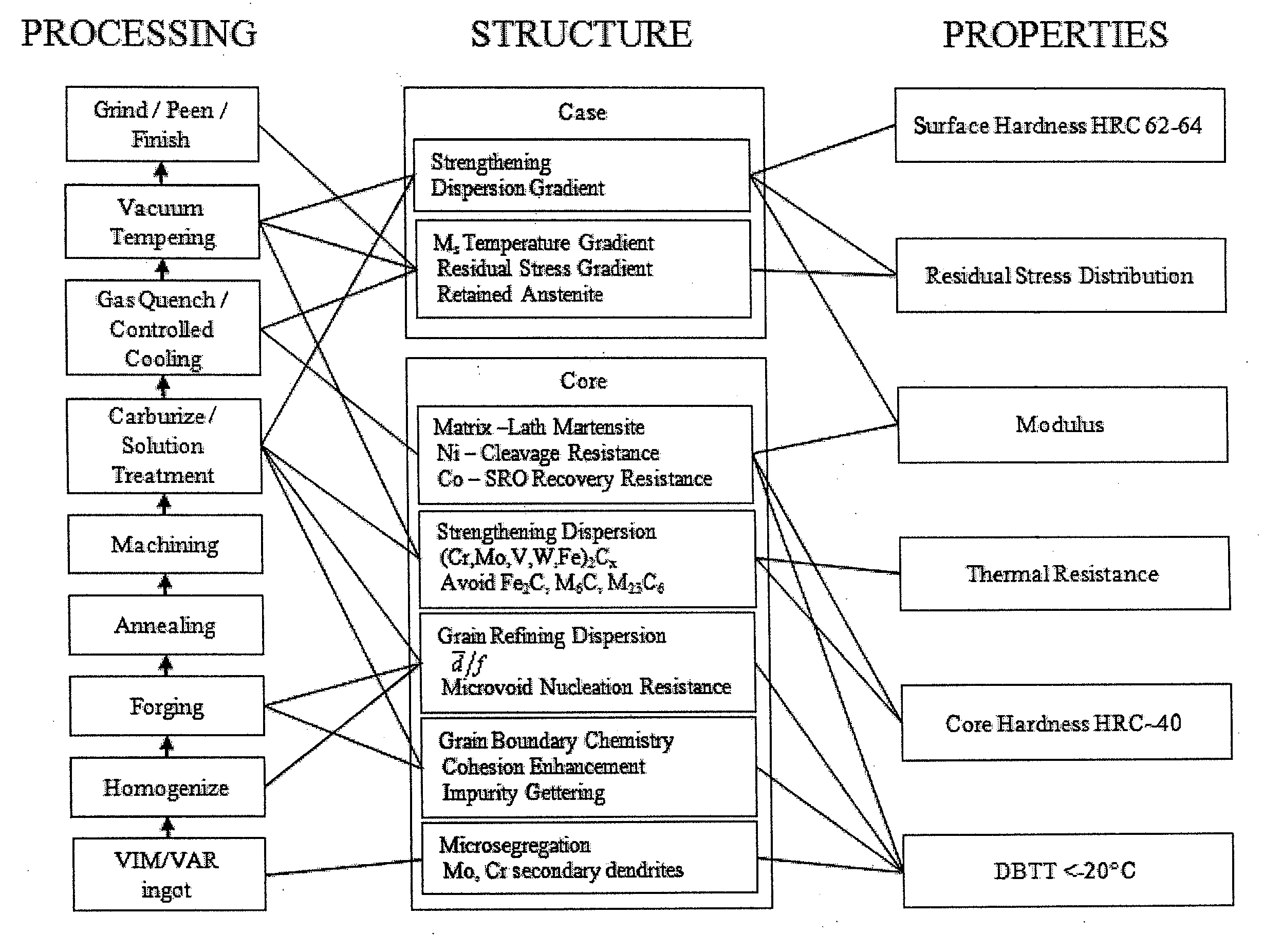Secondary-hardening gear steel
- Summary
- Abstract
- Description
- Claims
- Application Information
AI Technical Summary
Benefits of technology
Problems solved by technology
Method used
Image
Examples
example 1
[0023]A 3,000-lb vacuum induction melt of Fe-16.1Co-4.5Cr-4.3Ni-1.8Mo-0.12C-0.1V-0.1W-0.02Ti (wt %) was prepared from high purity materials. The melt was converted to a 1.5-inch-square bar. The optimum processing condition was to solutionize at 1050° 90 minutes, quench with oil, immerse in liquid nitrogen for 1 hour, warm in air to room temperature, temper at 468° C. for 56 hours, and cool in air. The DBTT in this condition was between 150° C. and 250° C.
example 2
[0024]A 30-lb vacuum induction melt of Fe-17.0Co-7.0Ni-3.5Cr-1.5Mo-0.2W-0.12C-0.03Ti (wt %) was prepared from high purity materials. Ms of the case material was measured as 162° C. from dilatometry, in agreement with model predictions. The carburization response of this prototype was determined from hardness measurements. The optimum processing condition was to carburize and concurrently solutionize the steel at 927° C. for 1 hour, quench with oil, and immerse in liquid nitrogen. A subsequent tempering at 482° C. for 16 hours resulted in a surface-hardness of 62.5 HRC. The case depth of the carburized sample was about 1 mm. An atom-probe tomography analysis of the steel verified the absence of TCP phases.
example 3
[0025]A 300-lb vacuum induction melt of Fe-17.0Co-7.0Ni-3.5Cr-1.5Mo-0.2W-0.12C (wt %) was prepared from high purity materials. Because this prototype did not include Ti, the grain-pinning dispersion of TiC particles could not form. As a result, the average grain diameter was 83μ and toughness was very low. The CVN impact energy of the core material from this prototype was 5 ft-lb at an Ultimate Tensile Strength (UTS) of 238 ksi.
PUM
| Property | Measurement | Unit |
|---|---|---|
| Temperature | aaaaa | aaaaa |
| Temperature | aaaaa | aaaaa |
| Temperature | aaaaa | aaaaa |
Abstract
Description
Claims
Application Information
 Login to View More
Login to View More - R&D
- Intellectual Property
- Life Sciences
- Materials
- Tech Scout
- Unparalleled Data Quality
- Higher Quality Content
- 60% Fewer Hallucinations
Browse by: Latest US Patents, China's latest patents, Technical Efficacy Thesaurus, Application Domain, Technology Topic, Popular Technical Reports.
© 2025 PatSnap. All rights reserved.Legal|Privacy policy|Modern Slavery Act Transparency Statement|Sitemap|About US| Contact US: help@patsnap.com



